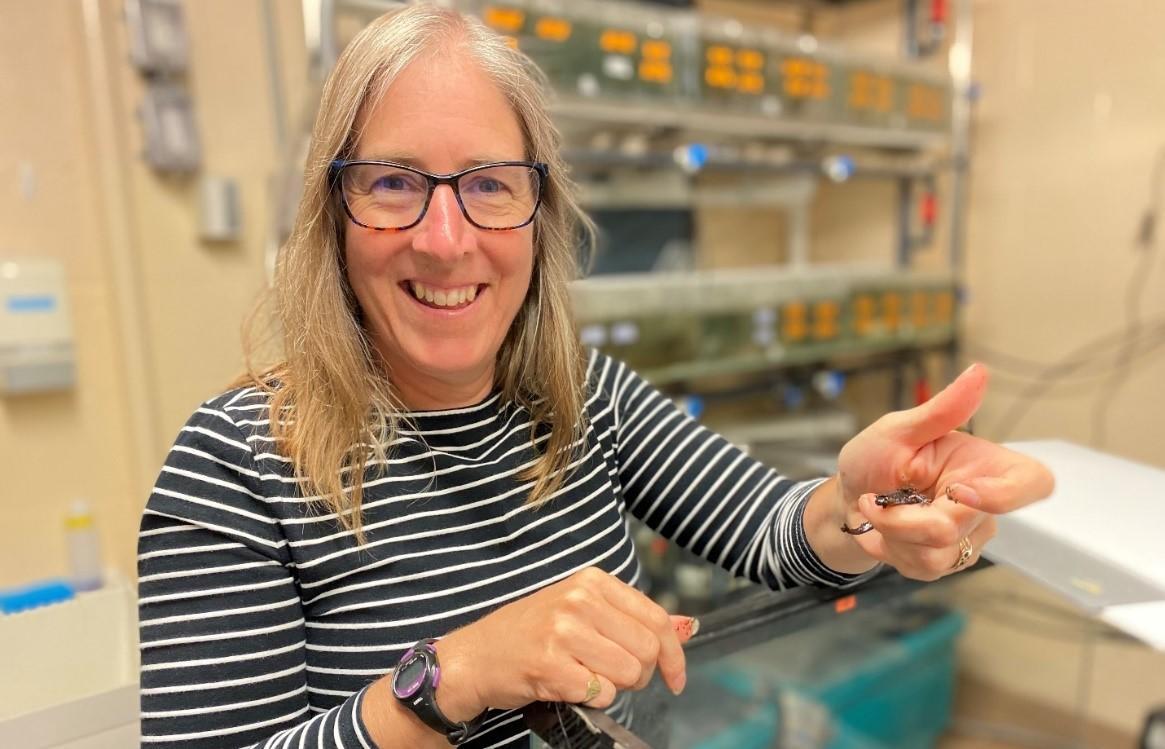In zoology — the branch of biology that studies the animal kingdom — researchers can do so through the Canadian Society of Zoologists (CSZ). In 2022, the CSZ awarded their prestigious R. G. Boutilier New Investigator Award to Professor Emily Standen in recognition of her work in Comparative and Evolutionary Biomechanics.
Prof. Standen’s research focuses on the structure and function of animal movement. She is passionate about evolutionary processes and has a particular interest in how plasticity, or the capacity of a single genotype to produce multiple phenotypes depending on environment, impacts evolutionary change. “It's exciting to think about functionality and how versatile animals are, and then how adaptive selection can act on that versatility to end in evolutionary diversification,” says Prof. Standen.
Usings amphibious animal models, Prof. Standen’s research answers questions about how novel environments can elicit plastic responses in animals and alter their functional morphology. One focus of her team is an African fish with lungs named Polypterus senegalus, or the Senegal bichir. This fish, although aquatic, can move over land. When swimming, the Senegal bichir gracefully oscillates its fins to produce thrust, with minimal body movement. In contrast, on land the fish plant their fins on the ground and catapult themselves over the fin by pushing off the ground with their bodies. How this novel movement affects fish musculoskeletal physiology in the short term, but also over the lifetime of the individual, are the basis of the questions the Standen Lab investigates.
The capacity of an animal to change its performance in novel environments will directly influence its ability to survive. How plastic changes within a single individual’s lifetime influence heritable changes across evolutionary time remains a stubborn problem in evolutionary science. By understanding the short-term flexibility of individuals, the Standen Lab hopes to learn more about the mechanisms that drive functional performance in animal systems and in turn learn something about how novel morphological traits appear as evolutionary innovations.
Prof. Standen stresses that “finding these answers is not easy, but collaborating with others and doing something that you are sincerely interested in will take you through all the struggles.”
Prof. Standen has been an active member of the CSZ since the onset of her career. She has acted as chair of the Comparative Morphology, Development and Biomechanics section of the CSZ and will start her role as the Second Vice-President of the CSZ in May 2023.
Read more:
- Standen Lab
- Canadian Society of Zoologists
- Robert G. Boutilier New Investigator Award – Canadian Society of Zoologists
- Terrestrial acclimation and exercise lead to bone functional response in Polypterus senegalus pectoral fins
- Locomotor flexibility of Polypterus senegalus across various aquatic and terrestrial substrates
- Fish out of water


